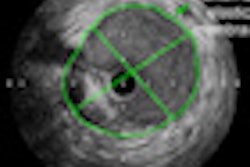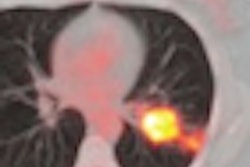Using certain imaging sequences, MRI can be sufficient for the routine surveillance of certain great vessel stents commonly used to treat congenital heart defects in children and young adults, according to a study in the October issue of the American Journal of Roentgenology.
British researchers found that sequences including through-plane gradient-echo imaging, steady-state free precision imaging, and MR angiography achieved results comparable to CT in identifying stenosis in stents made with nitinol, platinum-iridium, and stainless steel.
The information gleaned from these techniques would allow the development of a "more cohesive approach to surveillance imaging of great vessel stents," according to the researchers. The lead author of the study was Andrew Taylor, MD, from Great Ormond Street Hospital for Children in London (AJR, October 2010, Vol. 195:4, pp. 865-871).
As shown in previous studies, cardiac-gated CT can assess ventricular function and stent morphology, and it's regarded the best method for follow-up of endovascular stents; however, radiation is a concern.
On the other hand, MRI is susceptible to artifacts related to the stent material, the stent orientation, and the type of MRI acquisition protocol. The researchers implanted the three types of stents into an aorta model attached to an animal bypass pump with pulsatile flow. Each stent was imaged with conventional angiography as a reference standard, along with MRI using 10 different sequences and dual-source CT.
The researchers evaluated the sensitivity, specificity, positive predictive value (PPV), and negative predictive value (NPV) of each modality's ability to identify stent stenosis and stent lumen measurements.
The analysis found that conventional angiography was the most consistent, providing "excellent delineation of the stent lumen for all stents and conditions with high sensitivity, specificity, NPV, and PPV," the authors wrote. The diagnostic accuracy of CT also rated highly high for all three types of stents, although the researchers found metallic streak artifacts with CT in the platinum-iridium stents.
|
|||||||||||||||||||||||||||||||||||||||||||||||||||||||||||||||||||||||||||||||||||||||||||||||
| GRE = gradient-recalled echo; SSFP = steady-state free precession | |||||||||||||||||||||||||||||||||||||||||||||||||||||||||||||||||||||||||||||||||||||||||||||||
MRI's ability to visualize the stent lumen depended on the type of stent and the imaging sequence used. For all three types of stents, the best luminal visualization and diagnostic accuracy was provided by high flip-angle through-plane gradient-recalled echo (GRE) imaging, in-plane and through-plane steady-state free precession (SSFP) imaging, and high flip-angle MR angiography.
For nitinol and platinum-iridium stents, the diagnostic accuracy of three MR imaging sequences was comparable to CT and conventional angiography. For stainless steel stents, performance was slightly lower because of the larger penumbra of signal loss around the stent.
The other seven MR imaging sequences provided poorer visualization of the stent lumen and lower diagnostic accuracy due to the presence of artifacts.
The findings "suggest that these sequences may be sufficient for follow-up imaging of great vessel stents," the authors concluded. "This would allow more frequent assessment of stents at lower risk to patients and represent a significant change in clinical practice."
By Wayne Forrest
AuntMinnie.com staff writer
September 23, 2010
Related Reading
Cardiac MRI can help cut costs in the ER, June 29, 2010
Experiment validates use of CT for in-stent stenosis assessment, November 16, 2009
Cardiac MR techniques improve myocardial assessment, June 15, 2009
Cardiac magnetic resonance can assess at-risk myocardium after MI, June 5, 2009
Cardiac stress MR tops SPECT, showing cause of chest pain, November 30, 2008
Copyright © 2010 AuntMinnie.com


















